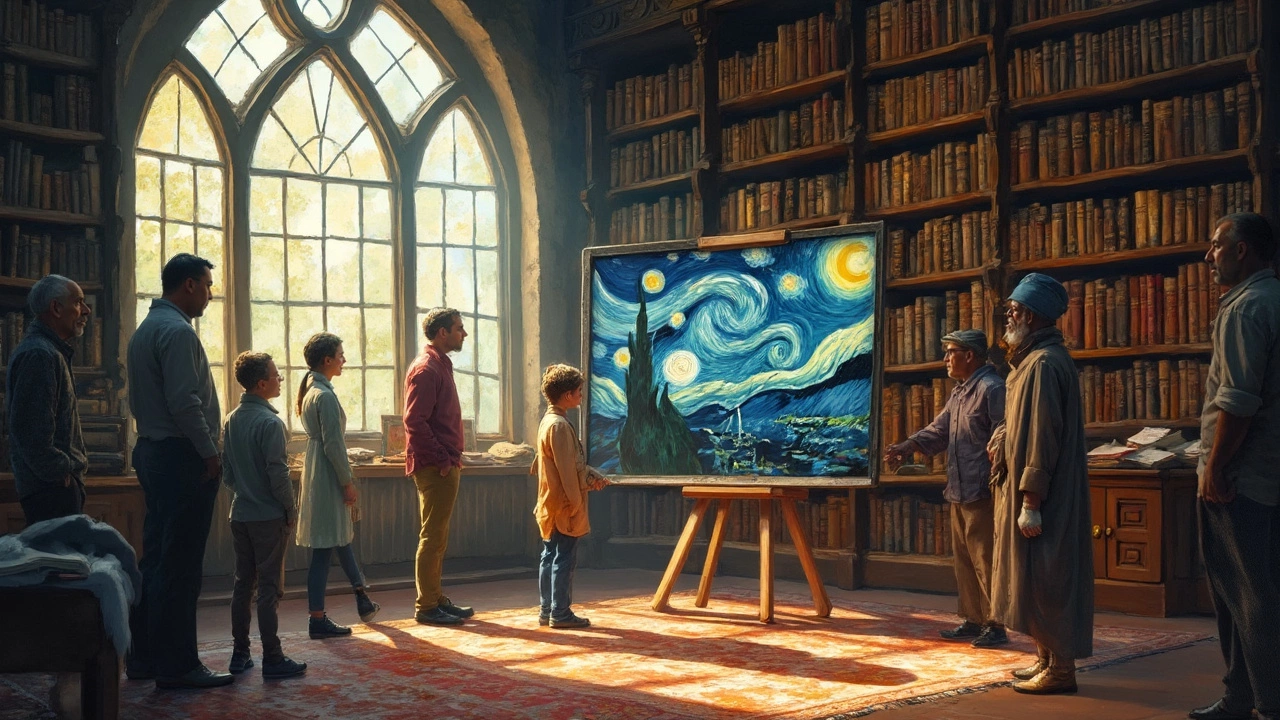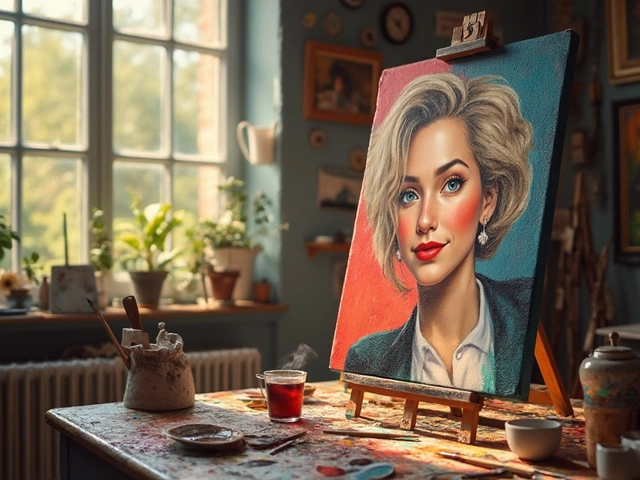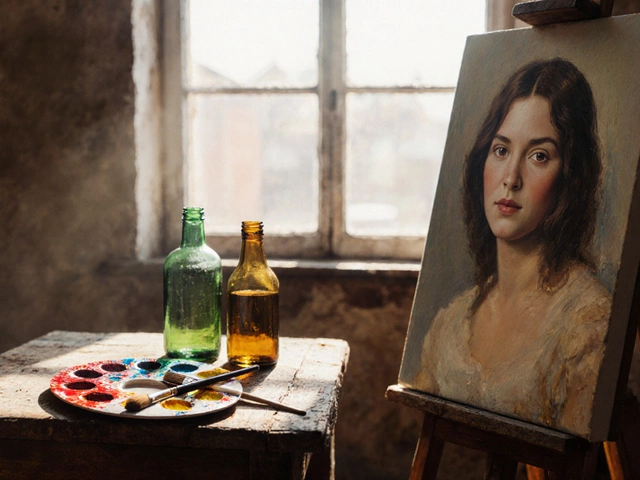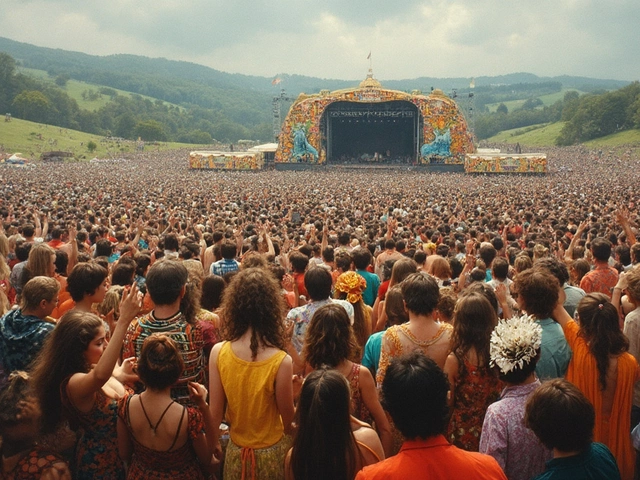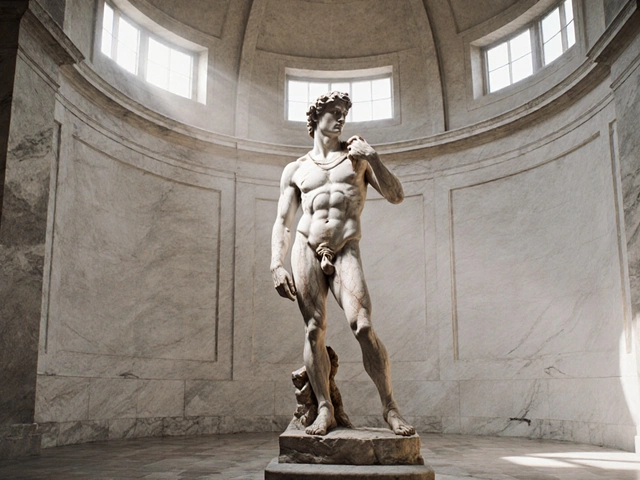Ever looked up at Van Gogh's 'Starry Night' and wondered why it's everywhere? On mugs, t-shirts, phone cases—seriously, it's like you can't escape those swirling stars. Turns out, there's an interesting reason for all this. 'Starry Night' is in the public domain. Yep, it's free for all to use, barring any pesky copyright hurdles. But how did it get there? And why does it matter?
Let's start with what the public domain actually means. It's like a free-for-all playground for creative works that have outlived the grip of copyright. So, 'Starry Night', painted back in 1889, has been around long enough that any copyright it might have had expired ages ago. In simple terms, it means anyone can use, share, or even remix this masterpiece without paying royalties or asking for permission.
Being in the public domain opens up a world of possibilities not just for fans of Van Gogh, but for budding artists and creators all over. Want to reinterpret those iconic swirls in watercolor? You're good to go! It's an artist's dream and a crucial tool for education, too. Teachers can include 'Starry Night' in lesson plans without a hitch, sparking creativity in ways that cater to a wide range of learners.
- What Makes It Public Domain?
- Starry Night's Journey Over Time
- Impact on Artists and the Art World
- The Legal Landscape
- The Internet's Role
- Pros and Cons of Accessibility
What Makes It Public Domain?
So, what’s the deal with the public domain? It's not just a legal term; it’s a fantastic space for creative freedom. For starters, art like Van Gogh's Starry Night falls into public domain because its copyright has expired. How does that happen? Well, it usually takes a creator's lifetime plus a number of years — often 70 years after the artist's death. Van Gogh passed away in 1890, so you can do the math!
This public domain status means that anyone—from art students to big corporations—can use 'Starry Night' without having to ask permission or pay fees. It’s like the artwork belongs to the world. You can appreciate Van Gogh’s brush strokes for free or even try to mimic his style without a legal team breathing down your neck.
How Did 'Starry Night' Get Here?
Great question! The simple answer lies in the history of copyright laws which have evolved over time. Back when Van Gogh was painting, the laws were way simpler. By today's standards, anything from his era that hasn't been claimed is often up for grabs, legally speaking.
This shift allowed 'Starry Night' to blossom beyond museums and galleries into everyday life. It's in classrooms, on merchandise, and even in memes! But it’s not just about ubiquity; it’s about inspiration. Scores of artists are reimagining Van Gogh’s work, blending his stars into unique new pieces.
Now, public domain isn’t a free-for-all for every old artwork. Some pieces might still have unknown rights or be tangled in legal red tape. But when it comes to Starry Night, you’re clear to explore without any worries.
The Upside for Everyone
Having 'Starry Night' in the public domain is a big win. Educators get to show this gem in art lessons without restrictions, and it lets new artists try out their creativity, inspired by Van Gogh’s genius. Plus, it brings art to the public, enriching our culture in ways that closed-off artworks just can't.
Starry Night's Journey Over Time
When Vincent Van Gogh painted Starry Night in 1889, he was staying at the Saint-Paul-de-Mausole asylum in Saint-Rémy-de-Provence, France. It's amazing to think this world-famous artwork, so full of life, was created during one of Van Gogh's most turbulent periods.
Initially, 'Starry Night' wasn't appreciated during Van Gogh's lifetime. Crazy, right? He even mentioned in his letters to his brother Theo that he wasn't entirely satisfied with it. Ironically, today it's considered his masterpiece.
Jump to 1941, and this iconic piece found its way into The Museum of Modern Art (MoMA) in New York. MoMA acquired it from the Lillie P. Bliss Bequest. Its presence in such a prestigious institution firmly cemented its status as a cornerstone of modern art.
'Starry Night' has had quite the globetrotting journey, participating in exhibitions worldwide, introducing tens of thousands to Van Gogh's genius. As it traveled, it gained popularity, and now, it's unlikely anyone who has even a slight interest in art hasn't seen this stunner.
What's even more interesting is how technology has helped spread its fame. The digital age brought Starry Night onto screens around the world. From high-res images showcasing every brushstroke to interactive virtual reality experiences, it's art like never before.
These days, identifiable swirling stars and the cypress tree are part of pop culture, transcending art into everyday life. And all this, thanks to its free reign in the public domain! It's like a license to inspire, and it seems there's no stopping it.
Impact on Artists and the Art World
When a masterpiece like Van Gogh's Starry Night enters the public domain, it creates waves in the art world, shaking up how artists engage with iconic works. Artists suddenly have the freedom to borrow elements, reinterpret them, and even mash them up with newer trends without worrying about legal battles. This freedom has become a vital source of inspiration and learning for many creatives.
Young artists find it a goldmine as they can study and create works influenced by the greats without being bogged down by restrictive laws. It's like getting a master class from Van Gogh himself! This has led to some pretty inventive reinterpretations of 'Starry Night,' from modern digital retrospectives to intricately designed tattoos that keep sparking creativity in unexpected places.
Fueling Creativity and Retelling Stories
Modern artists draw from Starry Night's themes and styles, offering fresh narratives. By tapping into these timeless pieces, they push forward new dialogues, reflecting contemporary issues but through a lens that resonates with familiarity. This ongoing dialogue between past and present keeps the art world vibrant and dynamic, continually pushing creative boundaries.
More Than Just Art: Educational Impact
Schools and educators see real value here too. Having free access to works like Starry Night means art education can go beyond textbooks. Students can explore texture, color use, and emotional expression first-hand, which enriches learning. Many teachers incorporate these works into their curricula, making art history lessons not only more engaging but also more personal.
| Impact | Description |
|---|---|
| Inspiration | Encourages creative reinterpretation and innovation. |
| Accessibility | Offers educational tools for arts and culture lessons. |
| Cultural Dialogue | Supports discussions on contemporary issues through historical works. |
So, while the public domain status is great for artists who love experimenting, it also supports cultural education and broader conversations. It's an all-around win for creative minds everywhere!
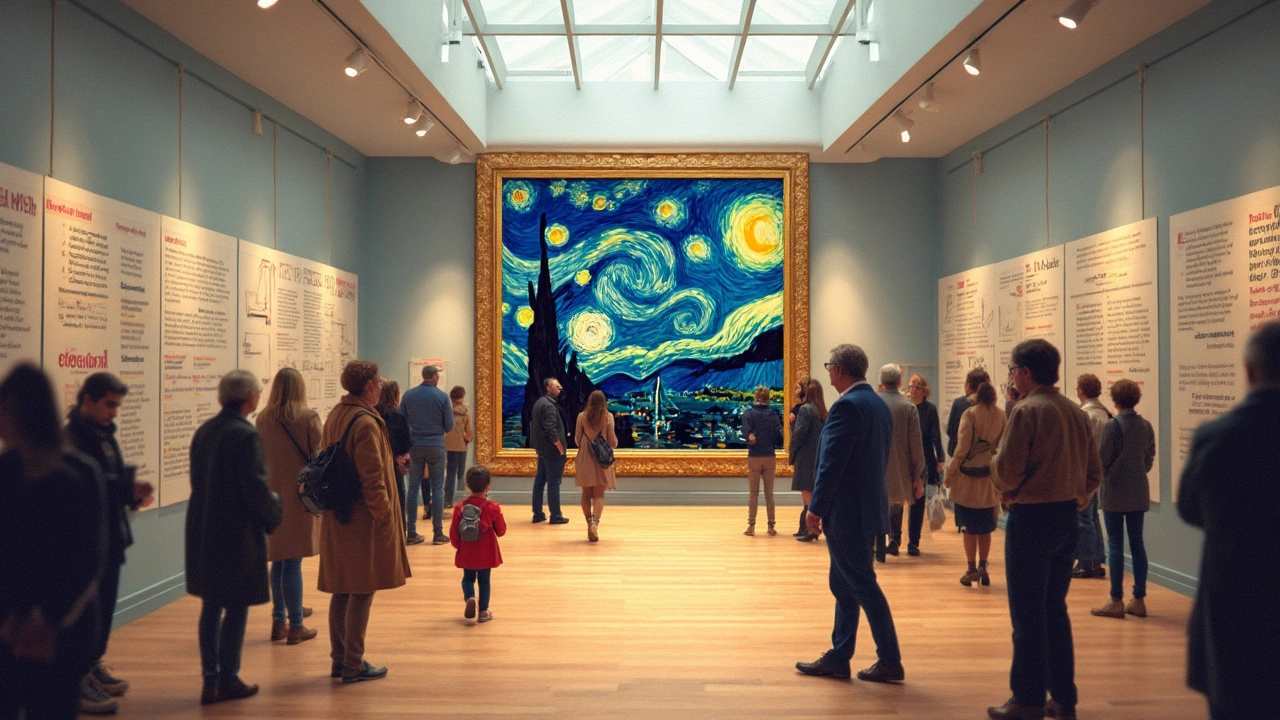
The Legal Landscape
When you’re dealing with big-time artworks like Van Gogh's 'Starry Night', the legal stuff can be a real head-scratcher. It’s not just about what’s out there now, but how it’s protected or not protected over time. Let's break it down: copyright laws, international treaties, and what this means for a piece that’s pretty much in every art lover’s head.
Understanding Copyright Expiration
So, here’s the deal: Van Gogh painted 'Starry Night' in 1889. Most countries, including the US and Canada, where I'm based, follow a basic rule for copyright: it lasts for the artist's life plus 50 to 70 years. In Van Gogh's case, his copyrights ended back in the mid-20th century—a long time ago. After that, the artwork became part of the public domain, making it a free-for-all piece.
Public Domain Explained
What’s public domain, you ask? Basically, it means no more copyright protection. Anyone can use the art without permission or a fee. This is huge for 'Starry Night' because artists, companies, and just about anyone can replicate and distribute their take on it without the typical legal bother.
International Laws and Treaties
A bunch of international agreements, like the Berne Convention, help ensure similar rules across countries. These treaties standardize copyright laws so when a work enters the public domain in one country, it often does in others too. This is why a 'Starry Night' print you pick up in Tokyo is just as legal as one from Paris.
For fans and educators, this open-access makes a huge difference. Imagine trying to teach art history with nothing but textbook descriptions. Instead, websites, museums, and schools can use these images openly, enriching how we all enjoy and learn about art.
| Country | Copyright Duration |
|---|---|
| United States | Life plus 70 years |
| Canada | Life plus 70 years |
| United Kingdom | Life plus 70 years |
It's wild to think 'Starry Night' just hanging out there, available for anyone to see, learn from, or remix. But hey, that’s the beauty of art being part of the public domain. It keeps Van Gogh’s legacy alive, breathing new life into every line, star, and swirl, free from any legal mumbo jumbo.
The Internet's Role
Ever wonder how a classic painting like Starry Night ended up being so easy to find online? The internet has a huge part to play in that. It's like the modern-day gallery that never closes! Once 'Starry Night' hit the public domain, the web became the perfect platform to spread it far and wide.
First off, digital platforms like Wikipedia and Wikimedia Commons have been game-changers. They host high-resolution images of Starry Night, making them accessible to pretty much anyone with an internet connection. Now, art isn't just something you need to travel to see in a museum; it's something you can study up close from your couch.
Bringing Art to New Audiences
Social media is another big player in the game. Platforms like Instagram and Pinterest are flooded with Starry Night inspired content every day. From DIY projects to fan art, these posts generate millions of views, likes, and shares. Famous paintings like this keep inspiring new audiences, many of whom might have never stepped foot in an art gallery before.
Because content is so easily shared online, you also get loads of educational content across YouTube and online courses. There are tutorial videos where folks break down Van Gogh's techniques, step by step. Pretty neat, huh?
The Growth of Print-on-Demand
Let's talk about print-on-demand services for a sec. Websites like Redbubble, Society6, and others have taken advantage of public domain works. People can now upload reproductions of Starry Night and put it on everything from shower curtains to skateboards. It's pretty amazing when you think about the reach Van Gogh's work has now!
Finally, with the internet, collaboration gets a serious boost. Artists around the world reinterpret pieces like 'Starry Night' and collaborate on projects virtually, breathing new life into something over 130 years old.
So, thanks to the web, the iconic 'Starry Night' continues to shine bright, inspiring both young and old, bridging past and present in ways that weren't possible before.
Pros and Cons of Accessibility
Making iconic artwork like 'Starry Night' widely accessible has its upsides and downsides. Sure, we all love to see Van Gogh prints everywhere, but it's a bit of a double-edged sword.
Pros
One major perk is that accessible artwork can inspire creativity on a global scale. Imagine all the artists out there who can tweak, remix, and get inspired by Van Gogh without dealing with any legal red tape. This unrestricted access encourages innovation, fostering a vibrant and diverse art community.
- Educational Value: Teachers and students can freely use images of 'Starry Night' in schools. It means more creative learning experiences and a deeper cultural appreciation.
- Cultural Exposure: The more we see these masterpieces, the more they're cemented in our cultural consciousness, making art an everyday experience for everyone.
- Economic Growth: The freedom to produce merchandise featuring Van Gogh's work opens up business opportunities, allowing entrepreneurs to capitalize on popular artwork.
Cons
On the flip side, there's the issue of over-saturation. Seeing 'Starry Night' everywhere may lessen its impact. It's like hearing your favorite song play on repeat; eventually, the magic starts to fade.
- Loss of Originality: When everyone can reproduce the art, it can become generic, stripping some of the uniqueness and specialness away from the original piece.
- Quality Concerns: Not all reproductions are created equal. Low-quality prints or poorly done merchandise can taint the perception of the artwork itself.
- Commercial Exploitation: There's always the risk of art being used purely for profit, without respect for its original intent or significance.
In a nutshell, the widespread availability of 'Starry Night' can breathe new life into the art world and educational spaces, but it might also risk turning a beloved masterpiece into just another face in the crowd. Balancing accessibility with respect for the original work is key. So, next time you enjoy a Van Gogh print, remember the fine line it walks.
